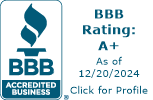
If you took a cue from last week’s tip and mulched your leaves, you might have some extra leaf mulch in your yard. Or maybe you cleaned up your garden and have some plant material left over. You can turn those piles of yard waste into “black gold” by composting them for use next spring.
Combine those leaves with other organic waste from your home to build a compost pile that is a well-balanced mix of browns and greens:
- Browns – dead or dry organic materials like leaves, chopped branches, corn stalks, shredded corrugated cardboard
- Greens – recently living and wetter organic material like vegetable and fruit scraps, coffee grounds, grass clippings, cut flowers, eggshells
As long as you only use the proper browns and greens and you maintain proper air flow, your compost should not have a bad odor or attract pests. Things you should NOT compost include, but are not limited to, meat, bones, pet waste, dairy, or fats. So while it’s fine to put some leftover salad greens into your compost, don’t add it if it’s been tossed in ranch dressing. And if you’re weeding, do not put weeds that have gone to flower or to seed into your compost or you could end up with more weeds than you pulled.
When the compost is ready, you can apply it atop your landscape or use it as a soil amendment. It won’t add many nutrients to the soil but will improve the soil’s capacity to hold onto both nutrients and water. It also improves the root zone.
Click “DO IT FOR ME” to request a FREE quote.

Source: customer-service@bestyard.com in collaboration with Associated Landscape Contractors of Colorado

















